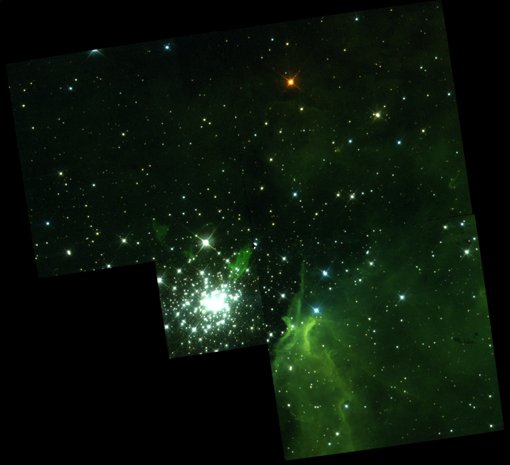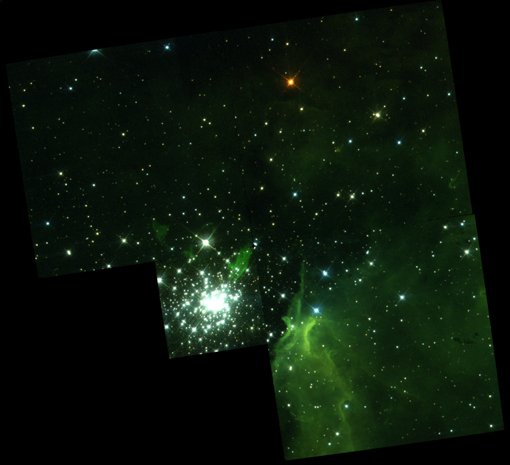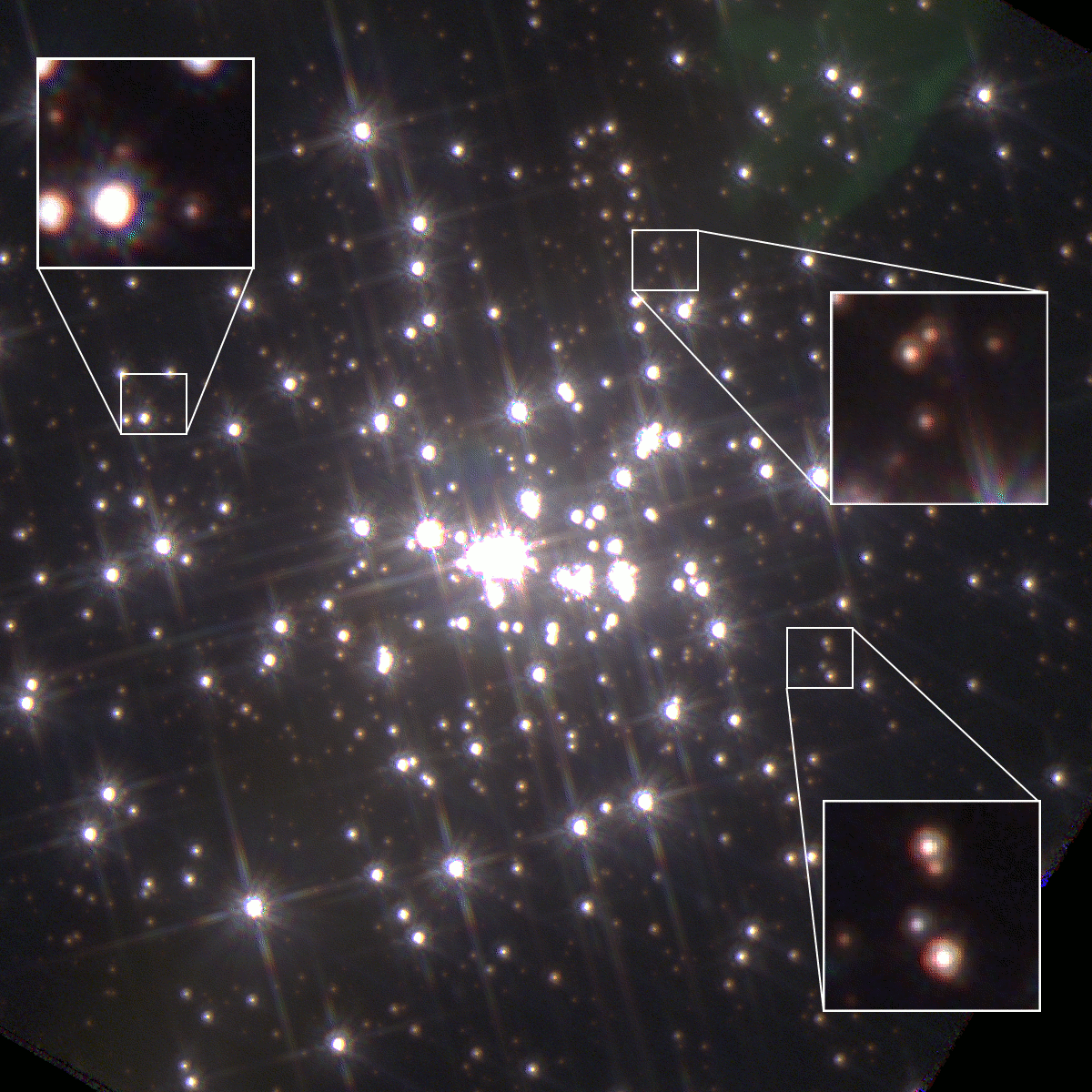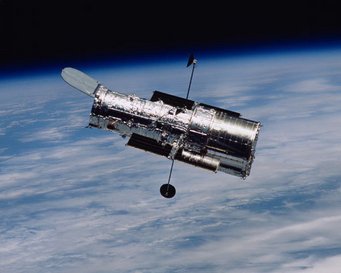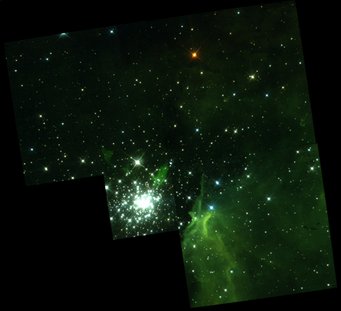Stars in Motion: High precision follow-up study of star movement shows surprising unrest in massive star cluster
Using the NASA/ESA Hubble Space Telescope, astronomers from the Max Planck Institute for Astronomy in Heidelberg and the University of Cologne have completed a long-term study of one of the most massive young star clusters in the Milky Way, comparing two observations that were made ten years apart. The comparison, which relies on extremely precise measurements, reveals the motions of several hundreds of stars, which prove to be at odds with current models of how such clusters evolve, stellar motion not having “settled down” as expected. The results have been published in the Letters section of the Astrophysical Journal.
| Background information | Endnotes | Questions & Answers | Image download |
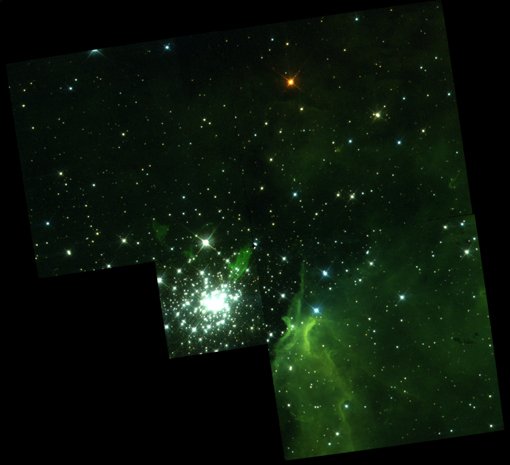
Ordinary star clusters ("open stellar clusters" or "stellar associations") disperse over time, as the different stars go their own separate ways. Very massive and compact clusters are thought to be different. In the long term, this can lead to the development of massive aggregations of stars known as "globular clusters", whose tightly-packed stars remain gravitationally bound to each other for billions of years.
With a mass of more than 10,000 suns packed into a volume with a diameter of a mere 3 light-years, the massive young star cluster in the giant nebula NGC 3603 is one of the most compact stellar clusters in the Milky Way.[1] (For comparison: in our own immediate stellar neighborhood, the same volume contains no more than a single star, namely the Sun.) Could this be a globular cluster in the making?
To find out, a team of astronomers led by Wolfgang Brandner (Max Planck Institute for Astronomy, Heidelberg, MPIA) tracked the movement of the cluster's many stars. Such a study can reveal whether the stars were in the process of drifting apart, or about to settle down. It also serves to distinguish members of the star cluster from unrelated stars that, as viewed from Earth, just happen to fall along the same light of sight.
Measurements of this kind are notoriously difficult. Imagine a star moving sideways at a rate of a few kilometers per second – a typical speed within stellar clusters. Viewed from a distance of 20,000 light-years (the actual distance of NGC 3603 from Earth), such a star's position on the night sky would shift by no more than a few billionths of an angular degree per year, at the limit of the capability of today's most precise observations.
By using two observations, made ten years apart with the same camera aboard the Hubble Space Telescope, and by performing an intricate analysis to account for all possible disturbances, Brandner and his colleagues were able to reach the required accuracy.
All in all, the team observed more than 800 stars. About 50 of these were identified as foreground stars, which are unrelated to the cluster. From the remaining sample of more than 700, the astronomers were able to obtain sufficiently precise speed measurements for 234 cluster stars of different masses and surface temperatures.[2] Boyke Rochau (MPIA), the paper's lead author, who performed the data analysis as part of his PhD work, explains: "Once our analysis was completed, we reached a precision of 27 millionths of an arc second per year. Imagine you are in Bremen, observing an object that is located in Vienna. Now the object moves sideways by the breadth of a human hair. That's a change in apparent position of about 27 millionths of an arc second." [3]
The results for the motion of these cluster stars were surprising: According to widely accepted models, which reproduce what is actually observed in older globular clusters, the average stellar speed in a cluster like the one in NGC 3603 should depend on mass: Stars with lower mass should move faster, and those with higher mass should move more slowly.[4] The stars for which precision measurements were possible represent a range of masses between 2 and 9 times that of the Sun. Yet all of them move at about the same average speed of 4.5 km/s (corresponding to a change in apparent position of a mere 140 micro-arc seconds per year). Average speed does not appear to vary with mass at all.
Apparently – and surprisingly – this very massive star cluster has not yet settled down. Instead, the stars' velocities still reflect conditions from the time the cluster was formed, approximately one million years ago. Team member Andrea Stolte from the University of Cologne explains: "For the first time, we have been able to measure precise stellar motions in such a compact young star cluster. This is key information for astronomers trying to understand how such clusters are formed, and how they evolve."
Vexingly, the question of whether or not the massive young cluster in NGC 3603 will become a globular cluster remains open. Given the new results, it all depends on the speeds of the low-mass stars, which were too faint to allow for precise speed measurements with the Hubble Space Telescope. Wolfgang Brandner says: "To find out whether or not our star cluster will disperse, we will need to wait for the next generation of telescopes, such as the James Webb Space Telescope (JWST) or ESO's European Extremely Large Telescope (E-ELT)." [5]
Background information
The article describing these results is B. Rochau et al., "Internal dynamics and membership of NGC 3603 Young Cluster from microarcsecond astrometry", published as a Letter in the June 10, 2010 issue of the Astrophysical Journal.
The members of the team are Boyke Rochau, Wolfgang Brandner, Mario Gennaro, Dimitrios Gouliermis, Nicola Da Rio, Natalia Dzyurkevich and Thomas Henning from the Max Planck Institute for Astronomy (MPIA) in Heidelberg, and Andrea Stolte from the University of Cologne.
Endnotes
| [1] | The nebula is located in the central plane of our home galaxy's main disk, in a region called the Carina spiral arm, at a distance of more than 20,000 light-years from the Sun. |
| [2] | For stars with either particularly high or particularly low masses, the position cannot be fixed with the required accuracy. For very bright and massive stars, parts of the detector are saturated, making it very hard to find the center of the little disk as which the star appears on the image. Stars with very low masses are comparatively faint; those stars are not sufficiently clearly distinguishable from the background ("low signal to noise ratio") for position measurements of the required precision. |
| [3] | More precisely, all these stars should have, on average, the same kinetic energy. Kinetic energy is proportional to an object's mass and to the square of its velocity. By this count, star with one half the mass of the Sun should, on average, move four times faster than stars with one solar mass. |
| [4] | That is, observer and object are about 800 km (or 500 miles) apart, a bit more than the distance between Boston, MA and Pittsburgh, PA. |
| [5] | The James Webb Space Telescope (JWST) is a planned infrared space telescope with a 6.5 m mirror, developed by a NASA-led international collaboration, and due to be launched in 2014. The European Extremely Large Telescope (E-ELT) is a proposed next-generation groundbased telescope with a 42 m mirror. It is being developed by an international collaboration led by the European Southern Observatory (ESO), and is slated for completion in 2018. German institutes, including the Max Planck Institute for Astronomy, are involved in the development of components and instruments for both projects. |
Questions and Answers
Why do ordinary star clusters disperse, while massive, compact ones do not?
Stellar associations and open stellar clusters are formed when a gigantic cloud of gas and dust collapses to give birth to new stars. Such clouds typically contain between 10 and 100,000 times the mass of the Sun, spread out over a volume up to 300 light-years across. For them, star formation is rather slow, and only about 10% of this mass ends up inside the cluster's hundreds to thousands of stars, which form within a few million years.
The remaining 90% of mass remains in the form of interstellar gas or dust. Eventually, it gets blown away: Young stars typically emit intensive light and particle streams. With that much mass lost, the gravitational attraction of such a cluster weakens and, over tens of millions of years, the stars disperse, going their own separate ways.
In compact massive clouds such as those of NGC 3603, stars form much more quickly and efficiently. The result is a "starburst cluster" in which around 50% of the original mass has ended up inside stars. As a result, the cluster keeps much of its initial gravitational attraction, and the stars can remain gravitationally bound.
How were the astronomers able to reach this degree of precision?
By comparing two observations a decade apart, by ensuring that the two observations were made under almost the same observing conditions, and by accounting for whatever differences remained.
Where such minute differences in position are concerned, comparing observations made with different telescopes, or with a single telescope that has experienced slight changes over the years, can put the task beyond the capabilities of modern data analysis. For ground-based telescopes, even slightly different weather conditions during the two observations can make the analysis impossible.
Brandner and his colleagues opted for the Hubble Space Telescope. They went back to the archives, retrieving image data for NGC 3603 from a July 1997 observing run with the Hubble Space Telescope's Wide Field and Planetary Camera 2 (WFPC2), and then made their own follow-up observations in September 2007, using the same camera and the same set of filters as in the original observations. Even so, it took the astronomers two years to sufficiently analyze their data, taking into account myriads of little effects, from slight variations in the sensitivity of the camera's different pixels to the effect of sunlight slightly warming the Hubble telescope in the course of each orbit.
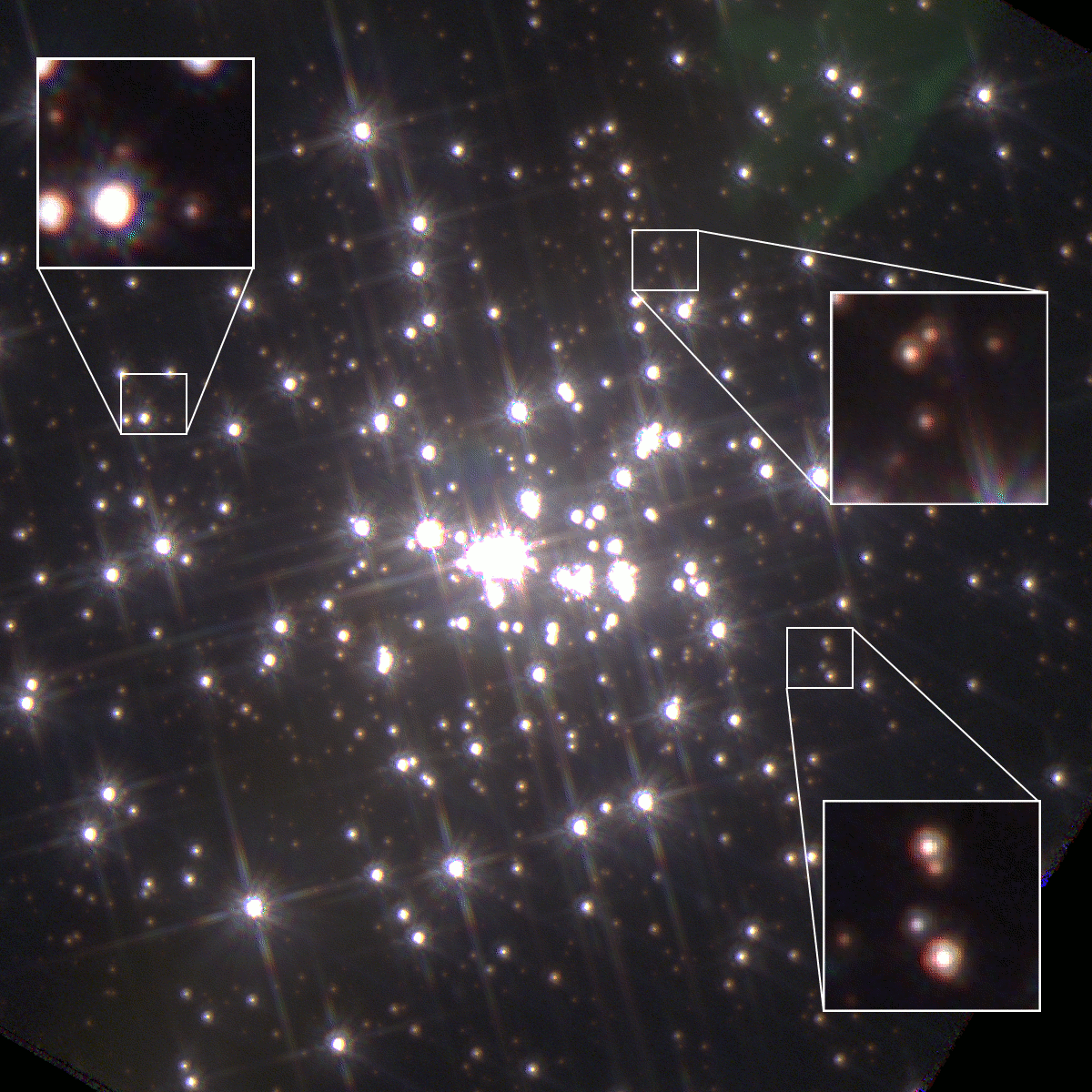
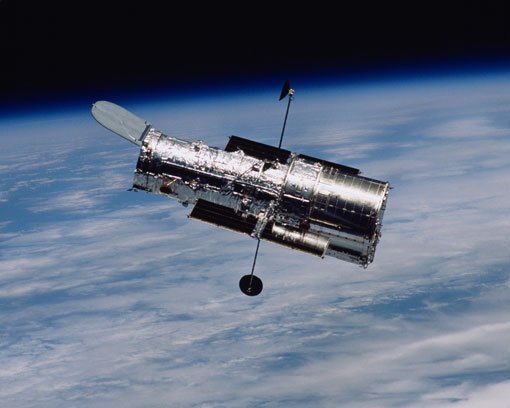
Download area
